On the hunt for ex-Woolies – and thriving high streets – in the Scottish Borders
With a visit to Edinburgh imminent – which will no doubt involve at least one or two Woolies-spotting detours – I figured it was time to do something with some previous Scottish photographs that I’ve had lurking in my archive.
The focus, then, of this post is the Scottish Borders – an area more than twice the size of County Durham, but one that offers fairly slim pickings as far as former Woolworths sites are concerned.
As far as I’m aware, only the county’s two largest towns ever had a Woolies store. Hawick (store #413), opened at 46 High Street in about 1930, followed by Galashiels (store #486) on 22 October 1932; both lasted until the chain’s eventual collapse in 2008. In contrast, settlements such as Selkirk, Kelso and Peebles seem to have missed out, even though Woolworths did, at various times, have stores in similar-sized small towns elsewhere (such as Launceston and Barnard Castle).
As you might expect, given its age, the Hawick store’s appearance is typical of the purpose-built 1930s small-town Woolworths, with all the usual features – symmetrical frontage, five bays, central pediment – present and correct. Indeed, as you can see from comparing the two shots below, the frontage is almost identical in scale and style to that of the contemporaneous Penrith store (#416).
As is normally the case, however, the Hawick store’s elegant original shopfront – shown in the 1931 photograph, below – was replaced with the latterday Woolies one in the 1960s, recognisable across the country by its black granite stall riser and metal-framed doors and glazing. At some point, the original brick and stonework was also covered with a not especially appealing coat of cream-coloured paint.
Like many of the value retailers that have taken over former Woolworths locations, the new occupant, Farmfoods, has chosen to keep the existing shopfront as it is, ensuring that it will still look like an old Woolies for some time to come!
Galashiels’ store at 25 Channel Street, from a couple of years later, is similarly typical of the ‘stretched’ frontage that was used for larger stores in the 1930s.
Here, however, the incoming tenant – value retailer Home Bargains – has adopted its usual approach of installing a brand-new dark-grey shopfront, echoing the investment that it’s made in other former Woolies sites such as Tamworth, Berwick-upon-Tweed (below) and Prestatyn.
However, whereas those stores all feature Home Bargains’ toned-down ‘heritage’ signage in burgundy and grey, Galashiels gets the standard red and pale blue version – and the fascia lights up, too. A contact at Home Bargains once told me that the more discreet signage is used when local planners are unhappy with the more garish alternative; one can only imagine that the planners in Galashiels didn’t make as much fuss as the others, as Channel Street certainly has as much historic character – and probably more – than Tamworth’s George Street.
The fading light when I visited last month meant that I only spent a short time in Galashiels, but my impression of Channel Street was of quite a handsome thoroughfare. It was only let down, I felt, by the steady stream of buses (a slightly curious experience, given that the road surface was more akin to that of a pedestrianised street), and by the proliferation of rather second-rate retail names.
Galashiels does have some big-name stores – among them Next, M&S Simply Food, Boots and New Look – but these are located slightly away from the centre at the fairly new Gala Water Retail Park. There’s also a large Asda behind the retail park, opened at the same time, and a longer-established Tesco that includes a pedestrian link between the new developments and the original town centre.
Taken together, there’s no doubt that Galashiels has a reasonably strong retail offer for a town of its size, but I couldn’t help thinking that Channel Street felt like a hotchpotch of shops that were left over – a high street without an anchor, and that no longer felt like an obvious destination.
When even Boots has left Channel Street to move over to the retail park, there’s clearly a job to do in reassessing and reinventing what Galashiels’ traditional town centre is for. Perhaps the reopening of the Waverley Line as the new Borders Railway – scheduled for December 2014 – will, as Transport Scotland hopes, “inject a new lease of life into an area that has not been served by a mainline railway for over 40 years”.
Hawick, in contrast, will only get its train service back if the reopened Borders Railway is ever extended beyond the present intended terminus at Tweedbank. Compared to Galashiels, however, it has less of an issue with out-of-town retail, and a high street that is packed with character and lovely buildings – most notably the fabulous Town Hall in the Scots baronial style.
Visiting last May, however, I was struck by the number of empty shops – including Almstrongs, a closed-down independent department store – and by the high street’s overall quietness on a Bank Holiday Sunday. Even finding a place to eat was quite a challenge, with the local cafés (not open on Sunday) losing out on our cash to the ubiquitous Wetherspoon’s.
Yet, of all the country’s high streets, Hawick is fortunate in having a fantastic sense of place, with fine buildings, a rich history, and a great heritage (continuing today) as a centre for knitwear production. Overall, it felt like a town that could be doing a lot more, Hexham-or Barnard-Castle-style, to capitalise on its assets: promoting independent retailers, and developing and marketing itself to both locals and potential tourists as an attractive destination to shop, eat and linger.
On my retail-related travels over the last three years, I’ve visited more than 150 town centres across the country – and some of those start from a position of having few historic assets, or are saddled with a dreary and soulless 1960s shopping precinct that only demolition will remedy.
It’s time that the powers-that-be in our more characterful centres – like Galashiels and Hawick – realised what fantastic potential those places have, and showed creativity, innovation and foresight in creating a modern and distinctive high street that can still thrive in an age of online and Internet retailing.
Many thanks to Ettrick Graphics for giving me permission to reproduce the 1931 photograph of Hawick Woolworths.


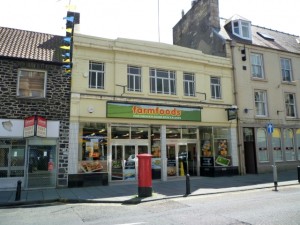
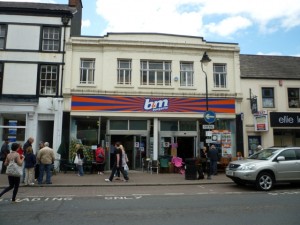
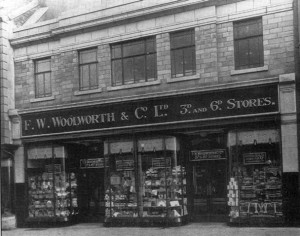
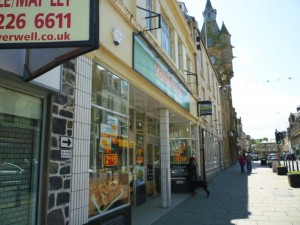



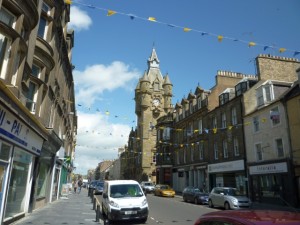

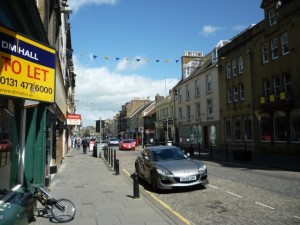



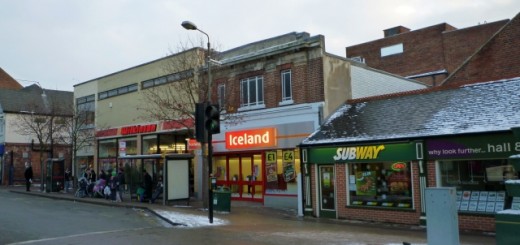




Interesting read as always Graham. I went to Galashiels a couple of years ago and will be returning with work in March. Hopefully I’ll have a chance to see the town centre for myself this time!